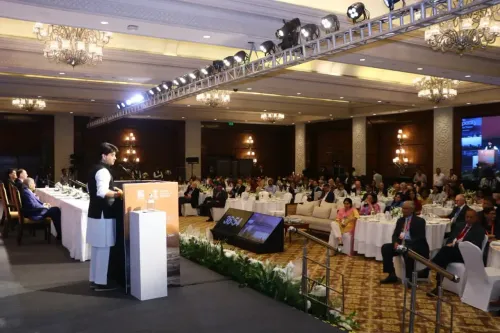Are There Over 1,700 Global Capabilities Centres Employing 19 Lakh People in India?

Synopsis
Key Takeaways
- India has over 1,700 GCCs employing more than 19 lakh people.
- Revenue from GCCs has increased significantly over the last five years.
- GCCs are evolving from support roles to advanced R&D functions.
- A national framework is being established to support GCCs in tier II cities.
- Various states are implementing policies to promote GCC growth.
New Delhi, Aug 6 (NationPress) Currently, India boasts more than 1,700 global capabilities centres (GCCs) that collectively employ over 19 lakh individuals, as reported to Parliament on Wednesday.
In the past five years, the revenue generated by these GCCs surged from $40.4 billion in FY19 to $64.6 billion in FY24, achieving a compound annual growth rate (CAGR) of 9.8 percent, according to Jitin Prasada, Minister of State for Electronics and Information Technology, referencing data from the National Association of Software and Services Companies (Nasscom).
The role of GCCs has evolved, transitioning from mere support centres for basic functions to becoming hubs for research, development, and design, as highlighted by the minister. Collectively, these centres employ more than 19 lakh people nationwide.
In the Union Budget 2025–2026, it was announced that a national framework would be developed to guide states in enhancing GCCs in tier II cities, thereby strengthening India’s GCC ecosystem.
This framework will provide recommendations to improve infrastructure and talent availability, propose byelaw reforms, and establish mechanisms for industry collaboration.
Additionally, various state governments, including Madhya Pradesh, Uttar Pradesh, Karnataka, Tamil Nadu, and Telangana, have initiated dedicated policies to foster the establishment and growth of GCCs, as stated by the minister.
Earlier last week, a report by SBI Capital Markets (SBICAPS) projected that the number of GCCs in India could rise from 1,700 to over 2,200 by 2030.
The report also indicated a 25-30 percent increase in REIT assets under management (AUM) in the coming years, driven by a broader range of asset classes and a consistent influx of investable assets.
Leasing activity for office spaces set a new record, exceeding the previous high by 20 percent in CY24, with rising rents and decreasing vacancy rates.
According to the report, the momentum is set to persist in CY25, particularly in Bengaluru, Delhi-NCR, and Pune, as reported by the investment banking division of the State Bank of India (SBI).
GCCs have emerged as a primary source of demand, with multinational corporations increasingly utilizing India for core operations rather than merely seeking labor cost advantages. The report anticipates a 1.3 times growth for these facilities in the near future.









